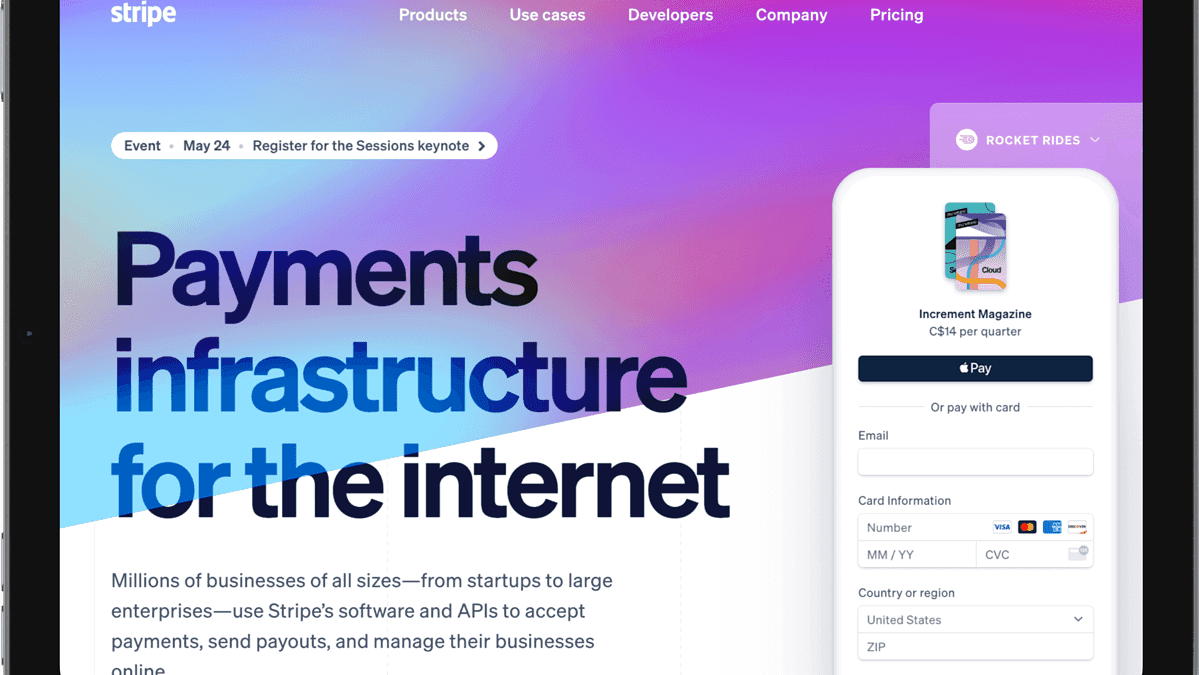Introduction and Overview: Mastering Advanced Course Creation
Creating an online course isn’t just about recording a few videos and calling it a day. Here’s the thing: successful course creation requires a strategic approach that combines engaging content, purposeful structure, and thoughtful delivery methods. As someone who’s helped hundreds of entrepreneurs develop their courses, I’ve seen firsthand how the right strategy can transform a basic idea into a transformative learning experience.
When you’re ready to level up your course creation game, you need to think beyond the basics. This means carefully considering your students’ learning journey, incorporating multiple content formats, and building in strategic engagement points throughout your course. Think about how your most successful in-person teaching moments have worked – those lightbulb moments when students really “get it” – and how you can recreate these virtually.
The key is to approach course creation as an architectural process. Just as a building needs a solid foundation, clear pathways, and purposeful spaces, your course needs a robust framework that supports your students’ learning journey. This includes designing progressive modules that build upon each other, creating meaningful assignments that reinforce learning, and incorporating feedback loops that help students stay on track.
You’ll want to consider various learning styles and preferences in your course design. Some students learn best through video content, while others prefer reading or hands-on exercises. By incorporating multiple content formats – such as video lessons, written materials, interactive quizzes, and practical assignments – you create an inclusive learning environment that caters to diverse learning needs.
Advanced course creation also involves thinking about the technology and tools you’ll use to deliver your content. Consider how you’ll structure your learning management system, what automation you’ll implement to streamline student progress, and how you’ll track completion rates and engagement. These technical decisions play a crucial role in creating a seamless learning experience for your students.
Throughout this guide, we’ll explore these advanced strategies in detail, providing you with practical steps and real-world examples you can implement in your own course creation process. Whether you’re updating an existing course or creating a new one from scratch, these strategies will help you create more engaging, effective, and profitable online courses.
Foundation Concepts and Planning
Here’s the thing about creating advanced online courses: the magic lies in your foundational planning. Before diving into fancy features or complex content structures, you need to establish a rock-solid framework that will support your entire course ecosystem.
| Feature | Benefit | Use Case |
|---|---|---|
| Drip Content | Increases engagement | Course progression control |
| Quiz & Assessments | Validates learning | Student progress tracking |
| Certificates | Motivates completion | Professional development |
| Community Access | Builds loyalty | Student interaction |
Start by deeply understanding your ideal student’s journey. Map out their current situation, challenges, and desired transformation. What keeps them up at night? What skills do they need to master? This insight shapes everything from your course structure to your teaching approach. For example, if you’re teaching advanced photography, your students might be struggling with client management while wanting to master complex lighting techniques.
Next, outline your course’s core transformation pathway. Think of this as your student’s roadmap to success. Break down complex concepts into digestible modules, each building upon the previous one. A well-structured course might start with foundational principles, then progress through increasingly sophisticated applications. Your photography course could begin with advanced camera settings, move into lighting theory, and culminate in real-world client shoots.


The key is creating a learning environment that supports multiple learning styles. Some students absorb information best through video demonstrations, others through written guides, and many through hands-on practice. Design your content to incorporate various teaching methods – combine video lessons with downloadable worksheets, practical exercises, and interactive elements.
Consider your assessment strategy carefully. How will students demonstrate their mastery? Traditional quizzes work for basic knowledge checks, but advanced courses often require more sophisticated evaluation methods. Think portfolio reviews, case study analyses, or practical projects that showcase real-world application of skills.
Technology integration deserves thoughtful consideration at this stage. Choose tools and platforms that enhance learning rather than complicate it. Your course platform should support your teaching methodology while remaining intuitive for students. Consider features like progress tracking, community engagement tools, and automated feedback systems.
Remember to build in engagement touchpoints throughout your course. These could be scheduled live Q&A sessions, peer review opportunities, or collaborative projects. Engagement keeps students motivated and provides valuable feedback on their progress. Advanced learners particularly benefit from opportunities to apply their knowledge and receive expert guidance.
Finally, develop a clear content creation timeline. Factor in time for research, content development, recording, editing, and testing. Quality advanced courses often take three to six months to develop properly. Don’t rush this process – your thoroughness in planning will directly impact your course’s effectiveness and student success rates.
Step-by-Step Implementation Guide
Here’s the thing about creating advanced online courses – success lies in the systematic approach you take. Let’s break down the implementation process into manageable phases that will help you create a compelling course that truly serves your students.
Start by conducting thorough market research to validate your course concept. Spend at least two weeks interviewing potential students, analyzing competitor offerings, and identifying gaps in the market. Create detailed buyer personas that capture not just demographics, but also learning preferences, pain points, and desired outcomes. This foundation will guide every decision you make moving forward.
Next, develop your course outline with precision. Begin with your end goal and work backward, breaking down complex topics into digestible modules. For example, if you’re teaching advanced digital marketing, start with foundational concepts like audience research before progressing to advanced targeting strategies. Each module should build upon the previous one, creating a logical learning progression.
The key is creating engaging content that maintains student momentum. Plan for various learning styles by incorporating multiple content formats. Consider recording video lessons between 5-15 minutes long, supplementing them with downloadable worksheets, and adding interactive elements like quizzes or assignments. Remember to include practical examples and case studies that demonstrate real-world application.
Focus on developing a robust course structure within your learning management system. Set up automated welcome sequences, progress tracking, and completion certificates. Create engagement touchpoints throughout the course – discussion prompts, accountability checks, and milestone celebrations. These elements help maintain student motivation and improve completion rates.
Implement a beta testing phase before your full launch. Select a small group of students (ideally 10-15 people) who represent your target audience. Gather detailed feedback on content clarity, pacing, and technical functionality. Use this feedback to refine your course materials and improve the overall learning experience.
Finally, develop a launch strategy that builds anticipation and demonstrates value. Create a content calendar that includes pre-launch content, testimonials from beta testers, and sneak peeks of course materials. Plan for both organic promotion and paid advertising, ensuring your message reaches your ideal students where they’re already spending time online.
Remember to establish systems for ongoing student support and course improvement. Schedule regular office hours, create FAQ resources, and develop a process for collecting and implementing student feedback. Your course should be a living product that evolves based on student needs and industry changes.
Advanced Strategies and Techniques
Here’s the thing about creating truly exceptional online courses – it’s all about mastering the advanced techniques that separate good courses from unforgettable learning experiences. Let’s dive into strategies that will elevate your course creation game to the next level.
Start by implementing progressive learning pathways that adapt to your students’ needs. Rather than creating a one-size-fits-all experience, design multiple routes through your content. For instance, if you’re teaching digital marketing, create separate tracks for beginners who need foundational concepts and experienced marketers who want to dive straight into advanced tactics. This personalization dramatically increases engagement and completion rates.
Interactive content is your secret weapon for deeper learning retention. Instead of just recording lecture videos, create scenario-based learning modules where students must apply concepts to solve real-world problems. For example, in a business course, present actual case studies where students must develop strategic solutions, then provide detailed feedback on their approach.
Microlearning segments are becoming increasingly crucial in today’s fast-paced world. Break down complex topics into digestible 5-10 minute lessons, each focused on a single learning objective. This approach makes it easier for students to fit learning into their busy schedules and helps prevent cognitive overload. Follow each micro-lesson with a quick implementation exercise to reinforce the concept.
The key is creating a robust content calendar that maintains momentum throughout your course. Plan your content delivery strategically, balancing theory with practical application. Creating a winning content calendar ensures consistent engagement and prevents student overwhelm.
Implement spaced repetition techniques by strategically revisiting key concepts throughout your course. For instance, if you introduce an important framework in week one, design exercises in weeks three and five that build upon and reinforce that initial learning. This method significantly improves long-term retention and understanding.
Consider incorporating peer learning opportunities through structured group projects or mastermind sessions. These collaborative experiences not only enhance learning but also create a supportive community environment. Design activities where students can share their unique perspectives and learn from each other’s experiences, fostering a rich learning ecosystem.
Finally, develop a comprehensive feedback loop system. Beyond traditional quizzes, implement self-reflection exercises, peer reviews, and detailed instructor feedback at crucial points in your course. This multi-layered approach helps students understand not just what they’re learning, but how they’re progressing and where they need to focus their efforts.
Common Challenges and Solutions in Advanced Course Creation
Creating an advanced online course comes with its unique set of challenges, but here’s the thing: every obstacle has a practical solution. Let’s explore the most common hurdles course creators face and how to overcome them effectively.
Technical overwhelm often strikes when creating sophisticated course elements. The solution isn’t to simplify your vision, but rather to approach it systematically. Start by mapping out your technical requirements, then tackle one element at a time. If you’re implementing complex features like automated assessments or branching content, test each component thoroughly before moving to the next.
Content organization becomes particularly challenging with advanced courses that contain multiple layers of information. Create a detailed course outline that clearly shows the relationship between concepts. Use progressive revelation techniques to introduce advanced topics gradually, ensuring students have mastered foundational concepts before moving forward.
Many course creators struggle with striking the right balance between theory and practical application. The key is to follow each theoretical concept with a real-world example or hands-on exercise. For instance, if you’re teaching advanced marketing strategies, include case studies of successful campaigns and templates students can customize for their own businesses.
Student support can become overwhelming as courses grow more complex. Implement a tiered support system that includes detailed FAQs, peer support forums, and scheduled office hours. Consider creating supplementary resources like quick-reference guides and troubleshooting flowcharts that empower students to solve common problems independently.
Pricing advanced courses appropriately often causes anxiety. Research your market thoroughly and consider offering different access levels or payment plans. Remember that advanced courses command premium prices when they deliver clear, measurable outcomes. Document student success stories and testimonials to demonstrate your course’s value.
Finally, maintaining course relevance in rapidly evolving fields presents an ongoing challenge. Schedule regular content reviews, and build in flexibility to update modules as needed. Consider creating a feedback loop with your students to identify areas where the content needs refreshing or expansion.
Best Practices and Optimization
The key is to approach course creation with both strategy and heart. When developing your advanced course materials, start by mapping out your student’s transformation journey. Think about where they are now and where they want to be – then create content that bridges that gap effectively.
Your course structure should follow a clear, logical progression. Begin each module with an overview that sets expectations and ends with a quick win to maintain momentum. I’ve found that students retain information better when content is chunked into 10-15 minute segments, followed by practical exercises that reinforce the learning.
Consider implementing multiple learning modalities to accommodate different learning styles. While video content often forms the backbone of online courses, supplement it with written transcripts, downloadable worksheets, and audio versions. This approach not only makes your course more accessible but also helps students engage with the material in ways that work best for them.
Regular feedback loops are crucial for course optimization. Set up automated check-ins after each module to gather student insights. Use tools like progress tracking and completion rates to identify potential sticking points. When you notice students consistently struggling with specific sections, that’s your cue to revise and improve those areas.
Engagement is everything in online education. Create opportunities for active learning through discussion prompts, peer reviews, and collaborative projects. Consider implementing gamification elements like achievement badges or progress bars to maintain motivation. You can learn more about creating engaging content sequences in our guide on how to create a winning membership site content calendar.
Don’t forget about the technical aspects of course delivery. Optimize video loading times by compressing files appropriately, ensure mobile responsiveness across all content types, and regularly test your course navigation from a student’s perspective. Small technical hiccups can significantly impact the learning experience.
Finally, remember that course optimization is an ongoing process. Schedule quarterly reviews of your content, update examples to stay current, and continuously incorporate student feedback. The most successful course creators I know treat their courses as living documents that evolve with their students’ needs and industry changes.
Case Studies and Examples: Real Success Stories in Course Creation
Let me share some powerful real-world examples that showcase how different course creators have mastered advanced course strategies. Here’s the thing: seeing how others have succeeded can often spark the perfect inspiration for your own course design.
Take Sarah, a yoga instructor who transformed her in-person teaching into a thriving online yoga therapy program. She structured her course using a unique “micro-learning” approach, breaking down complex poses into 5-minute digestible videos. Her completion rates soared to 87% because students could easily fit the lessons into their busy schedules. The key was matching her content delivery to her students’ lifestyle needs.
Another fascinating example comes from Marcus, a business consultant who struggled with his initial course launch. His first attempt at teaching advanced marketing strategies resulted in a disappointing 23% completion rate. After analyzing student feedback, he completely restructured his program to include weekly live Q&A sessions and practical implementation workshops. The result? His completion rates jumped to 78%, and student satisfaction scores doubled.
According to Course Creation Best Practices, implementing these strategies can significantly improve your course effectiveness.
Consider also the case of Elena, a language teacher who revolutionized her Spanish course by incorporating gamification elements. She created a points-based system where students earned “travel miles” for completing lessons, eventually unlocking virtual trips to Spanish-speaking countries. This creative approach led to a 92% engagement rate and impressive student retention.
One of my favorite examples is James, a photography instructor who initially struggled with teaching technical concepts online. He developed an innovative “practice-feedback-refine” model where students submitted weekly photo assignments, received personalized video feedback, and participated in peer review sessions. This comprehensive approach resulted in students producing portfolio-worthy work by course completion.
Looking at the corporate sector, a technology company implemented a hybrid learning approach for their employee training program. They combined self-paced modules with monthly virtual workshops and mentoring sessions. This blended strategy increased knowledge retention by 64% compared to their previous traditional online courses.
| Feature | AccessAlly | Alternative |
|---|---|---|
| Course Creation | ✅ Advanced drag-drop builder | ❌ Basic editor only |
| Member Management | ✅ Built-in CRM system | ❌ Requires third-party tools |
| Payment Processing | ✅ Multiple gateways supported | ❌ Limited options |
| Integration | ✅ WordPress native | ❌ External platform |
These success stories share common threads: they all prioritized student engagement, provided multiple learning pathways, and maintained consistent feedback loops. The most successful courses weren’t just about delivering content – they created immersive learning experiences that kept students motivated and engaged throughout their learning journey.
Remember, the most effective course strategies often emerge from understanding and responding to your specific audience’s needs. These examples demonstrate that successful courses combine thoughtful content structure with engaging delivery methods and robust support systems.
Future Considerations and Conclusion
As we look ahead to the evolving landscape of online education, it’s crucial to build flexibility into your course creation strategy. The key is developing content that can adapt to emerging technologies and changing student needs. Consider incorporating AI-powered personalization features, augmented reality elements, or microlearning modules that can be easily updated as your field advances.
Think about scalability from day one. While you might start with a core curriculum, plan for potential expansions like advanced modules, specialty tracks, or complementary mini-courses. This forward-thinking approach allows you to grow your course ecosystem organically while maintaining consistent quality and engagement throughout your offerings.
Data will continue playing an increasingly vital role in course optimization. Start implementing robust analytics tracking now to monitor student progress, engagement patterns, and completion rates. This information becomes invaluable as you refine your content and delivery methods. Consider setting up regular review periods to analyze this data and make informed adjustments to your course structure.
Community aspects of online learning are becoming more significant than ever. Plan for ways to foster meaningful connections among your students, perhaps through mastermind groups, peer mentoring programs, or facilitated discussion forums. These elements can significantly enhance the learning experience and increase student success rates.
Remember that technology is just one piece of the puzzle. While it’s important to stay current with educational tools and platforms, the fundamental principles of effective teaching remain constant. Focus on creating clear learning pathways, providing actionable feedback, and maintaining strong student support systems.
As you move forward with your course creation journey, stay flexible and open to evolution. What works today might need adjustment tomorrow, and that’s perfectly normal. Keep gathering feedback from your students, stay connected with industry trends, and don’t be afraid to experiment with new approaches. Your willingness to adapt and grow will ultimately determine the long-term success of your online course business.
By maintaining this balanced approach between innovation and proven educational principles, you’ll be well-positioned to create courses that not only meet current needs but continue delivering value well into the future. The online education space is dynamic and full of opportunities – embrace the journey of continuous improvement and watch your course empire thrive.






